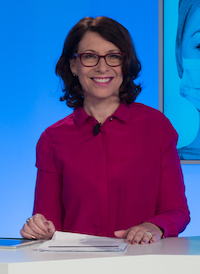
By Claire Doole, www.doolecommunications.com
Pitching to an executive board is high-stakes. After months of hard work developing a project or strategy, you need the board’s buy-in—but securing it is no easy feat.
The room is filled with senior executives who are busy, and their knowledge of your subject might vary widely. Adding to the challenge, there may be up to nine members present—an odd number to avoid voting ties.
I’ve coached many professionals to navigate these make-or-break moments. So, what’s the secret to winning over the board?
Below are some tips and tricks that could help you get the thumbs up for your next pitch.
Preparation prevents poor performance
Advance notice is critical. Boards don’t like surprises. It pays off to informally speak with each member beforehand so that you can write a concept note that you can get signed off.
Make sure you send a PDF of your slides to the board a few days before the pitch so they have time to read it. This means they can absorb the main arguments and prepare some pertinent questions.
Think strategically
Craft a compelling case to win the board’s buy-in. Remember, people are driven by “What’s in it for me?” So, spell out exactly how your proposal benefits the organization—or what’s at stake if they don’t act.Why should they approve of your idea? How will this help the organization/company meet its strategic aims? Do not lead up to this point; make it straight away.
Then you move to the three key messages that you want them to retain.
People find it easier to remember things in threes. The rule of three dates back to the Greek philosopher Aristotle, who was renowned for his public oratory.
For each key message provide evidence – facts, statistics, or even stories. Think not only about the benefits but also have a message for the sceptics. For example, why should they back a project that might be risky?
Keep it short and simple
Pitches vary in length between three and seven minutes, but remember you have to keep the attention of people who are busy and most probably thinking about all the other things they have to do.
If you are using slides, put the key messages in the top left-hand corner, as that is where people first look. They have to understand a slide at first glance.
Avoid death by PowerPoint – the slides are there to keep you on track, as a prompt.
Encourage questions
You should embrace questions, as they show interest and are an opportunity to learn and get ideas on how to improve your project/strategy. Of course, you should have anticipated key questions and included them in your pitch.
One final tip
I used to make videos and dreaded the validation process. One tip a colleague gave me was to include something that you know won’t be approved, as they fixate on this and tend to agree to the rest.
A friend who is a master pitcher uses this technique, and says it works every time with her board!
OTHER POSTS
Recently I have been coaching a lot of people to pitch to their board. It's a high pressure, high stakes moment, so have a look at some of my tips and tricks!
https://www.boardofinnovation.com/blog/executive-pitch-dos-and-donts/
Recently, I have been helping a number of organisations and companies prepare pitches to their Executive Board. So far, all of them have been approved. Here are some of the tips and tricks.
Pitching to your Executive Board is a high pressure, high stakes moment, so here are some ideas to make sure your idea gets the thumbs up!
https://www.linkedin.com/feed/update/urn:li:activity:7258896808859332609/
Author's bio
 Claire Doole is a former BBC correspondent and international spokeswoman who is passionate about helping people communicate with confidence. Since 2006, she has successfully trained hundreds of professionals in the art of presenting and public speaking, talking to the media, managing communications in a crisis, and writing for the web. In addition, she has coached C-level executives and public figures to give powerful TEDx and TED style talks in Europe and the Middle East. A Swiss and UK national, Claire trains and coaches in French and English.
Claire Doole is a former BBC correspondent and international spokeswoman who is passionate about helping people communicate with confidence. Since 2006, she has successfully trained hundreds of professionals in the art of presenting and public speaking, talking to the media, managing communications in a crisis, and writing for the web. In addition, she has coached C-level executives and public figures to give powerful TEDx and TED style talks in Europe and the Middle East. A Swiss and UK national, Claire trains and coaches in French and English.
Claire is also a highly experienced moderator having facilitated panel discussions with government ministers, NGO activists, humanitarians and human rights specialists at major events.
Claire helps clients design their virtual, hybrid and in-person events and runs workshops on organising and moderating at events.









